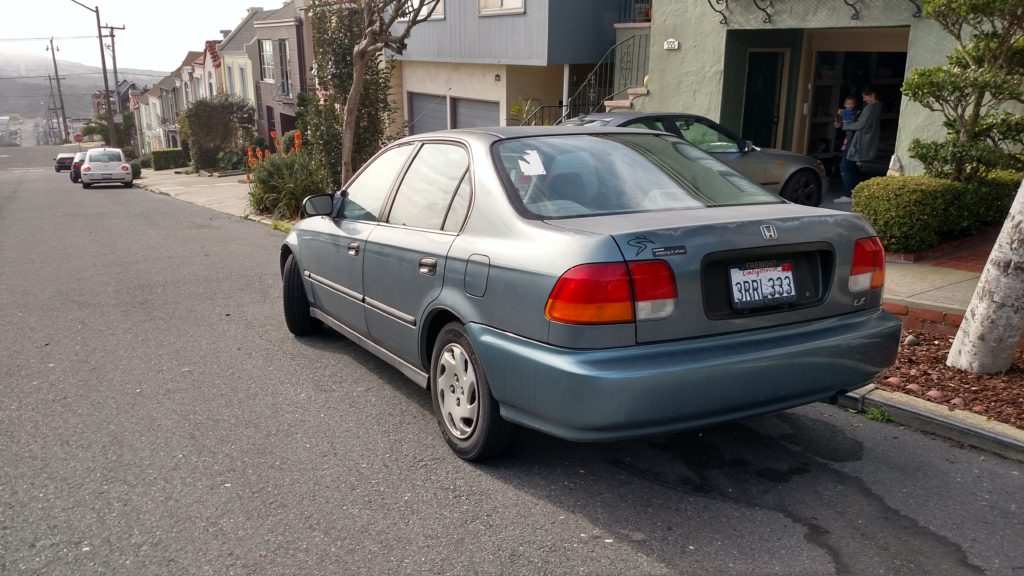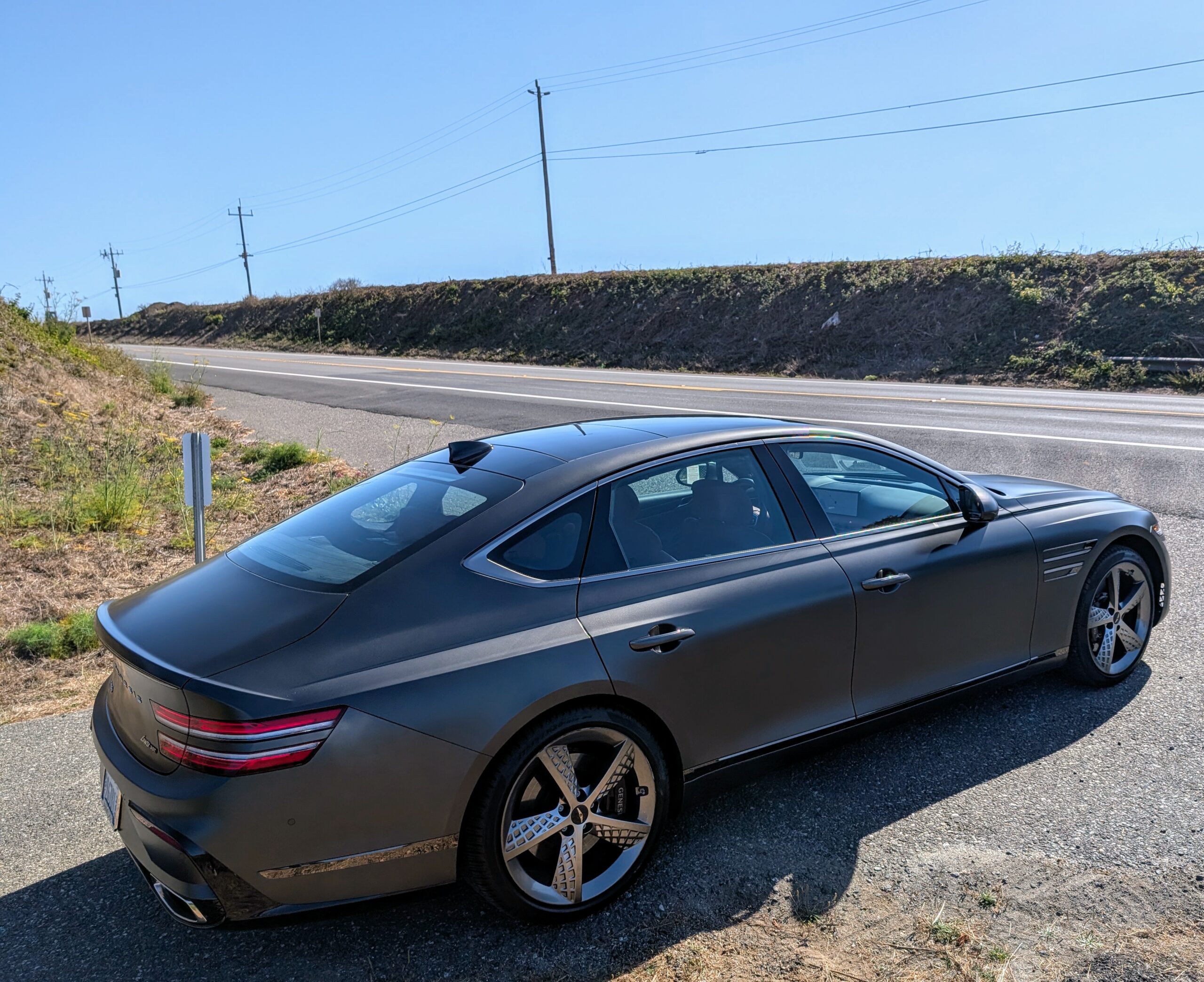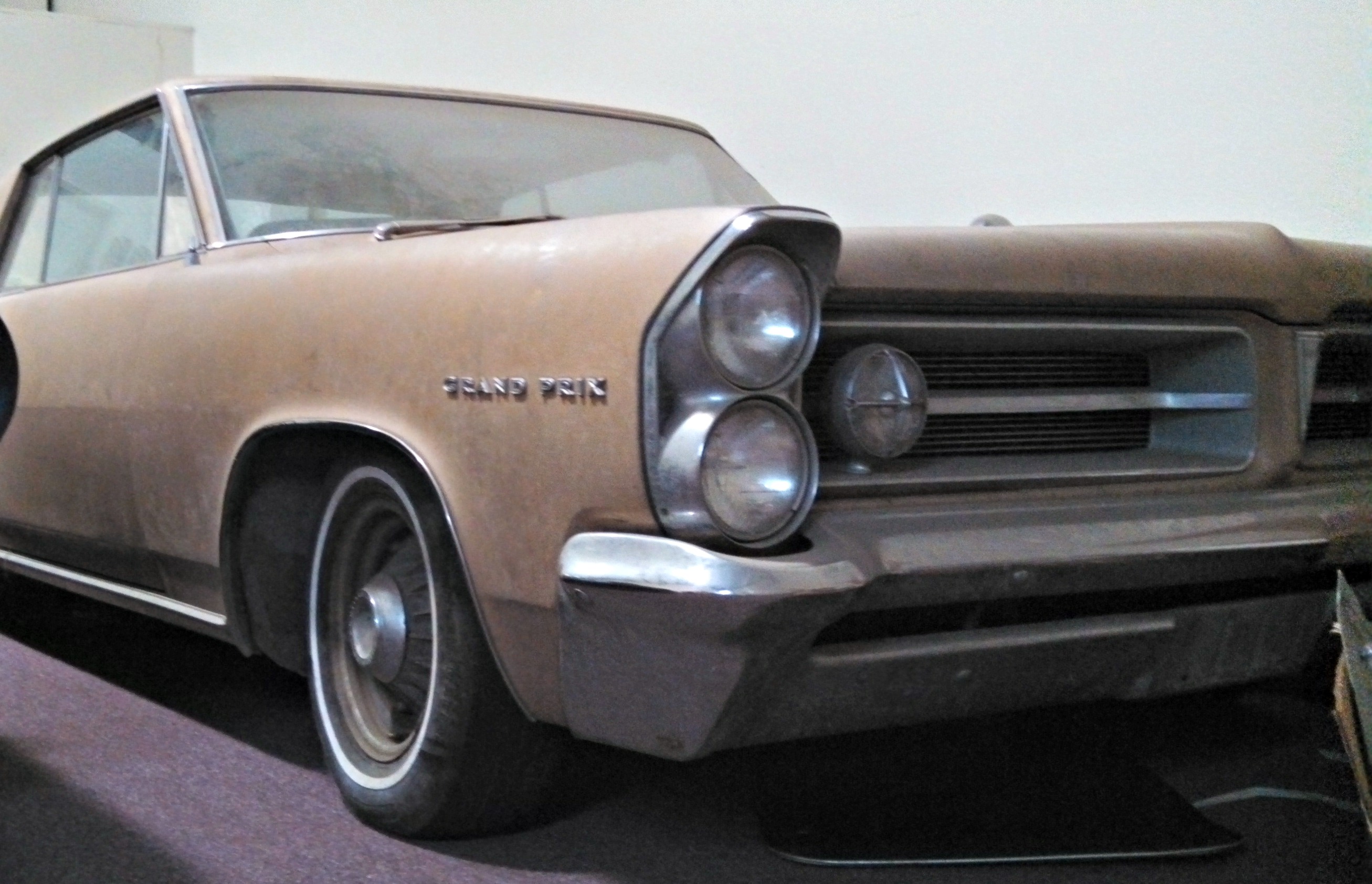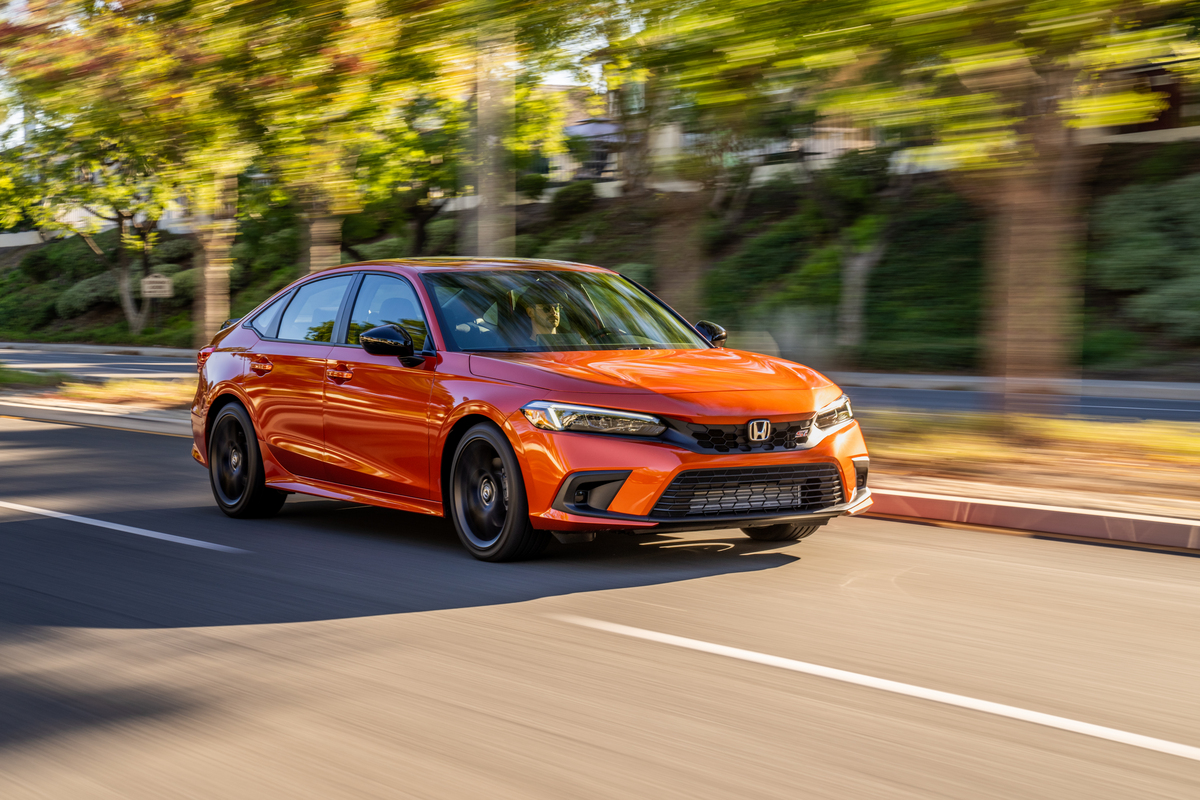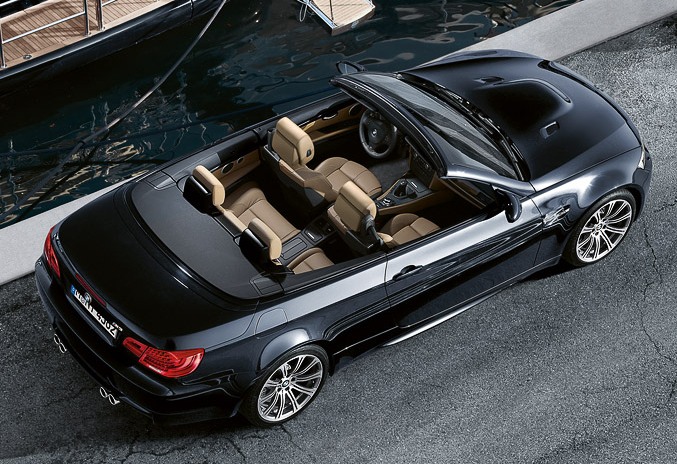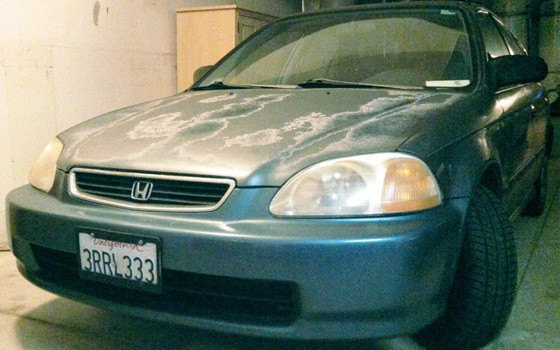
First published on autoshopper.com on July 15 2013, worthy of a rerun since the Honda has just left us
Since publishing this, I discovered James Ruppert is still using the Bangernomics handle I remember from my teenage years – imitation sincerest form of flattery etc
In this culture of “buy new” and “replace, don’t repair”, even a hardened old car lover like myself finds his head turned by some of the spectacular offers on new cars. Cars such as Kia Souls or Nissan Versas can be had for as little as $150 a month. Surely this has to be the cheapest motoring available? Ever the contrarian, I set out to examine that. My weapon of choice was a 1996 Honda Civic, resplendent in peeling aqua-marine paint, a spring chicken showing a mere 160,000 miles. It came my way free of charge, but craigslist will offer you a choice of colors and trims nearly as broad as the Honda dealer would have had back in the mid-nineties, yet now all floating around the $1000 mark.
Clearly then, six months after purchase the banger has paid for itself. Any motoring beyond that represents clear savings over the new car with the low monthly payment. Even if you need a new banger each year, you’re still saving. Insurance is less too; t makes sense to have full cover insurance on a new car, while the thousand dollar banger only needs liability insurance. Gas mileage will be about equal, since the efficiency gains made in engine design are offset by the additional weight of bigger newer cars—the 2013 Civic has near identical gas mileage to the 1996.

Our Banger:
The skill here is to find a car which doesn’t need fixing, and can be driven for a long time before it needs fixing. Repair is a two-pronged pain: the inconvenience of being without a car and needing a ride to and from the garage, or rolling around in the gutter underneath it trying to fix it yourself, plus the financial pain around paying for new parts or the labor to fit them. In this respect I am ready to acknowledge that my test car was a little too tired, although in 2000+ miles of commuter-style motoring it never let me down.
The primary issue it had was a minor radiator leak. It moved on from me with a new radiator cap; who knows perhaps that fixed it. Regardless, in traffic steam rose off the hood like geothermic activity in Yellowstone. In office car parks it smelt of nascent burning, some sort of distant automotive wildfire. Typical Honda, the engine was willing, bulletproof reliable, and hardly burned any oil. Despite the steaming, the temperature needle never moved from its position at center other than to warm up in the morning, although the radiator needed a fill every tank of gas or so.
Performance was adequate, and with the 5-speed stick shift, surprisingly fun. The shift was a little rubbery, but the clutch light, and overall the car was easy to drive. It would happily bowl along the outside lane of freeways at 80mph, and had the brakes to stop convincingly too. Cornering performance was clearly limited, especially with narrow budget tires, but again the limits were adequate and when reached gave way to dull, forecastable understeer. It is worth saying again—with the stick, quite fun. Fuel economy was truly remarkable, with it returning mid-thirties even in mixed urban and highway driving conditions.
When I was first offered the car, I had anticipated two pedals, and was surprised to find three upon sitting in it. However, I feel this review covers automatics too, since I spoke at length with owners of this era Civic, and most were automatics. The comments were the same: they’re slow; they’re gas misers; they’ll wear more than 150k easily.
Older cars have character lines / traits: they can be endearing, but equally they can be annoying. The wiper stalk on the test Civic was very sensitive, terribly keen to switch on. Often reaching for the volume knob on the stereo, an inadvertant brush of my cuff on the stalk, and I’d have the wipers on at double speed. Unfortunately the stereo needed plenty of reaching for, since the rheostat behind the volume knob didn’t work properly, and the only solution seemed to be continual twiddling, as if it was a radio tuner, in the hope that you might find a volume somewhere between earsplitting and silent as the grave. The Civic’s least civilized fault was its non-functioning electric windows. The motor in the driver’s door had been replaced, not so in the others. Fine, in mild weather. Fine in hot weather, for the driver, with the window, but Bikram Yoga for passengers in hot weather, although, in fairness, the air conditioning did still manage to blow some cold air as far as front seat passengers. All for the want of wind-up windows—a clear case of a new technology actually being a backwards step.
Banger or New?
Unsurprisingly, the banger is significantly cheaper that the new car, after all, the new car is depreciating at an enormous rate, and you, the customer, are paying for that with your lease payment. Frequent visits to the garage for repairs would offset these savings; bangernomics rely on the purchase of a banger which does not require spending on it, and, beyond the new radiator cap, our car did not require anything more than gas, water, and a little oil.
All new cars deliver tangible and intangible things which no banger will be able to match: the latest designs, the new car smell, climate controlled ipod connectivity, nice comments from friends/family. Those in search of bangernomics must eschew this decadence and ego-stroking. The banger might have foibles—the stereo/wiper interaction on the test car—but in time these things become endearing, like a behavioral quirk in a family member. More, the banger needs husbanding, something which requires a bit of knowledge and time, something which some people enjoy—I am one—but others do not. Our test car needed more of this than most, and it would be easy to find a car which was as drama-free as a new car—the other nineties Civic owners I spoke to felt this way about their cars.
Bangernomics offers significant savings in return for putting up with foibles and husbanding small faults in tired old cars. The new car with the $150 lease requires none of that care or attention, and, in turn, it becomes not a car, but an appliance. Which kind of person are you, a car buyer, or an appliance shopper?
